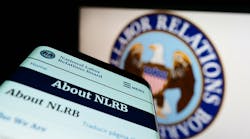Do you manage or just supervise? This question is becoming more important for material handling managers as the labor market continues to shift.
Right now, one of every three U.S. residents is classified as a “minority,” according to the the Census Bureau. The agency predicts that, by 2050, Hispanic and Asian populations will triple, while whites will make up only about one-half of the total population. More women are putting off marriage and kids to become breadwinners.
And, as baby boomers start to retire, the nation’s workforce will become a mix of different generations, all with very different value systems.
Are you ready to manage employee diversity? Don’t be too quick to answer. If you recruit minorities and women and follow the letter of the equal opportunity law, you’re aware of diversity, but you’re not necessarily managing it.
The best way to manage different perspectives is to recognize those differences and take steps to understand them.
That was the idea 11 years ago, when Cleveland (Ohio) State University launched its Diversity Management Program, a full-scale, academic curriculum that awards master’s degrees in psychology. The first of its kind in the nation, the Diversity Management Program is directed at mid-career adults who want to hone their leadership skills. The focus of the program is managing through understanding, or as Director Lisa (Tong) Parola Gaynier calls it, “cultural competency.”
“The goal is to increase managers’ ability to foster organizational excellence by learning how to lead diverse people in a complex global environment,” Gaynier explains, “and to be sensitive to different ways of thinking and develop skills that allow their brains to ‘flex’ to understand where other people are coming from.”
Top material handling executives already know how important this ability will be in the near future. According to a September survey by human resource management consulting firm Laurdan Associates Inc. (Potomac, Md.), nearly 70% of CEOs from Material Handling Industry of America (MHIA) member companies agreed that workforce diversity will be a key factor in their ability to compete.
Of course, recognizing diversity’s importance is one thing; managing it is another. “Notice differences and act accordingly,” Gaynier advises.
Some respondents to the Laurden survey are already accommodating different employee needs by allowing flexible work schedules and establishing mentoring programs for women and minorities.
Making such accommodations does not mean being lax. There is a tangible business case for managing diversity. “The hallmark of a successful organization is, increasingly, its ability to respond to and satisfy a diverse marketplace,” says Ronald Adler, president and CEO of Laurdan Associates. “Workforce diversity in this context is about more than compliance…or about valuing diversity.…It is about more than social and ethical obligations. It is about organizational success.”
Consider one of Gaynier’s experiences. She met a supervisor at a large company who noticed one of his female employees was consistently late to meetings. Based on that, he assumed she was unreliable and expressed that opinion. As a result, his relationships with other female employees suffered, and morale declined.
“The problem was,” Gaynier says, “he scheduled meetings at 7:00 am, and that woman had to see the kids off to school. Instead of making a damaging assumption, he could have made an effort to ensure the meeting time was convenient.”
That’s how easy managing diversity can be. Simply understanding the needs of others can pay big dividends in morale, productivity and reduced turnover. When employees feel understood and respected, they feel good about coming to work, and that allows your operation to survive and thrive beyond the coming labor crisis.


